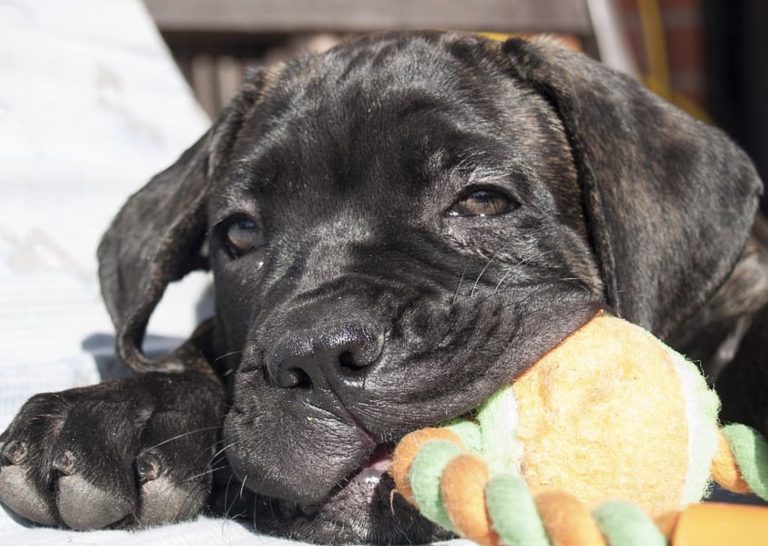Separation anxiety is one of the biggest problems dog owners face. We use the term to describe dogs that are overly attached or dependent on family members. And when you are not home, they become overly anxious and show distress behaviors. The most common are vocalization, house soiling, and destruction.
Dogs with separation anxiety display anxiety the moment dog owners prepare to leave the home. Your dog can also become restless, shake, shiver, refuse to eat, and become quiet and withdrawn.
Now, there are many ways to prevent and help with separation anxiety. Crate training is one method.
Today, we will talk about another way to treat separation anxiety. And that is by teaching your dogs to play with chew toys when we are away from home.
Difference between separation anxiety and normal canine behavior
Separation anxiety is a serious canine condition. It goes beyond the occasional mournful whimper when you leave the home.
Yes, most dogs are not happy when you leave the home. But there is a difference between rather normal canine behavior and separation anxiety.
Before you can label anything as separation anxiety, you have to make sure any destructive behavior is not a result of inadequate training.
For example, does your dog truly understand good manners? And does your puppy understands manners when you are not watching? Is your puppy 100% potty trained?
Signs of separation anxiety
There is no definite sign of separation anxiety. There are multiple symptoms, and you have to pay attention to all of them. If your dog exhibits only one of these signs, it might be another problem. But it is still a cause of concern. Here are the symptoms:
- Anxious behavior, including pacing, whining or trembling while you are gone or when you prepare to leave the house
- Excessive barking and howling
- Destructive behavior, including chewing and digging around doors and windows
- Urinating and defecating in the house
- Excessive salivation and drooling
- Desperate and prolonged attempts to escape confinement
Before Your Train
Now, before you train your dog to use a chew toy as prevention for separation anxiety, you have to prepare the home.
For starters, you have to establish a predictable routine. This will allow you to predict when your dog will show separation anxiety signs. Since your dog is anxious, begin training by making his day calmer and more predictable. This applies to when you are home and away.
Establish a daily routine. This way, your dog can predict when to expect attention and when to prepare for other situations, when he is not getting attention.
Schedule these times for object play and naps at times when you normally depart from the home.
The next step is environmental enrichment, or meeting your dog’s needs. When you interact with your puppy, make sure to meet all of his needs for social interaction. That includes play, exercise, training, and elimination. Initiate regular interactive sessions and provide enough play and attention so that your dog is prepared to relax when you leave.
How to use chew toys for separation anxiety?
You might think it is as easy as giving your dog a kong toy and leaving the home. But that is not the case. If you do that, you will not be successful.
With chew toys, you need to start with the best possible scenario. When is that? When you are home and next to your dog. If you start giving chew toys when you are not home, your dog will not eat his dinner and will be sad.
Do not expect your dog to touch the chew toy and his food. You cannot train him this way.
So, instead, train your dog to play with a chew toy and love it when you are home. Even better, when he is in his crate, provided you have done crate training.
While your dog plays with his chew toy and eats, be next to him. Encourage him to play with the chew toy. Slowly start moving away when he starts playing with the chew toy and eats the food. Eventually, your dog should start chewing without you next to him.
This is when you can leave him and start leaving the home while your dog is happily playing with his chew toy.
What causes separation anxiety in dogs?
There is no clear answer to this question. There are, however, several theories and reasons. For example, your puppy has never been left alone before. Or traumatic separation, which is common in shelter dogs.
Even a single traumatic event in the owner’s absence, like the house being robbed or an earthquake happening at that period, can cause separation anxiety.
Yes, personality and breeds play a role. Some clingy dogs are more at risk. But in any case, you have to train your dog to prevent separation anxiety.







